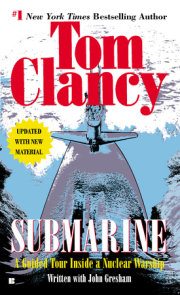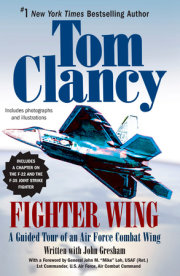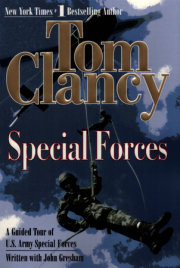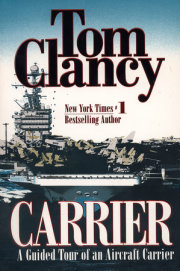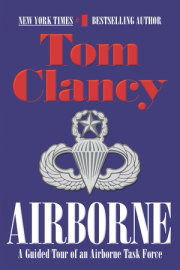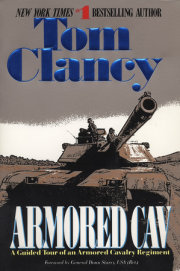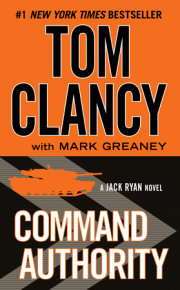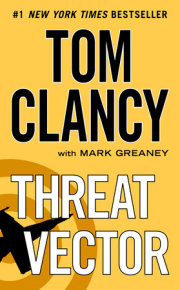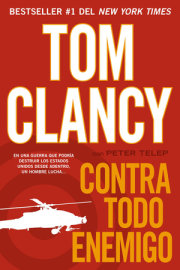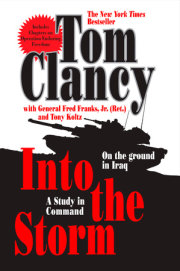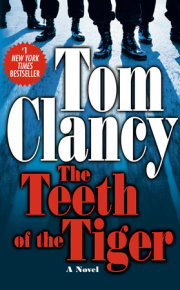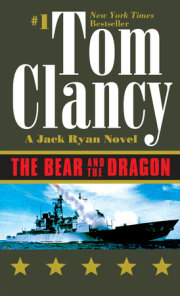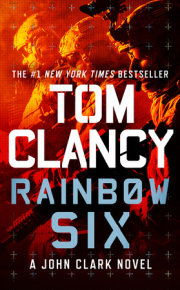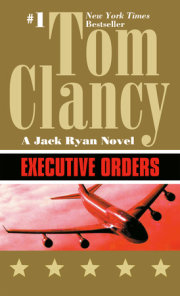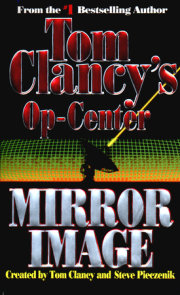Chapter One:
The Silent Service
Early History
When tracing the roots of the modern submarine, one is usually faced with a number of different places to start. Legend has it that Alexander the Great descended into the ocean in 332 b.c. near the city of Tyre, in a primitive diving bell. The great mind of Leonardo da Vinci is said to have created a primitive submersible boat of wooden frame design covered in goatskins, with oars providing propulsion through waterproof sweeps. A British contribution to early submarine concepts came in the late 1500s from William Bourne, a carpenter and gunmaker. It included the concept of double hull construction, as well as ballast and trim systems. The first concept for a military submarine came from a Dutch physicist, Cornelius van Drebbel. In addition to actually building and demonstrating a primitive submersible, he proposed a design specifically created to destroy other ships.
It was the United States (albeit still colonies in rebellion) that created the first workable military submarine design. In 1776, a Yale University student named David Bushnell designed the appropriately named
Turtle. The
Turtle was an egg-shaped submersible boat that had the ability to sneak up on a ship, submerge under the intended victim, bore a drill bit with a waterproof time bomb attached into the bottom of the hull, and escape before the bomb was detonated by a clockwork fuse. It was propelled by a hand-cranked screw, and had room for one overworked crewman.
On the night of September 6, 1776, Sergeant Ezra Lee of the Continental Army took the
Turtle to attack HMS
Eagle of the British squadron blockading Boston. But when he maneuvered underneath, he was unable to attach his bomb. During his escape, he was followed by British soldiers in a rowboat. Frantic, he released the bomb, which exploded literally in the faces of his pursuers. Though all parties escaped unhurt, it was a promising start to the modern military submarine.
A more substantive advance was the
Nautilus, designed by the American Robert Fulton, who would go on to design the first steamboat. The
Nautilus was a distinct improvement over the
Turtle in that it cruised under the intended victim, towing the explosive bomb or torpedo, as it was then called, until the bomb contacted the target and detonated with a contact fuse. The design was an exceptional success, destroying a number of target vessels in test runs. The French, who were sufficiently impressed to award Fulton a contract, actually considered for a time using it in the planned invasion of Britain. By 1804 Fulton was demonstrating the boat to the British, who despised the idea for its underhanded nature and, more importantly, its potential to sweep British ships from coastal zones. In the end, Fulton returned to America to begin work on his steamboats.
It remained for the Americans to create a submarine that would actually sink an enemy vessel in wartime. In 1863 a submersible boat was designed by Confederate army officer Horace
Hunley. His boat, the CSS H. L.
Hunley, was propelled by eight men turning a hand-cranked propeller. For armament, an explosive mine or torpedo was secured to a long spar protruding out in front of the Hunley. The idea was for the Hunley to ram the spar torpedo into the side of a target ship, where it would be detonated.
Unfortunately the Hunley was difficult to handle, and several crews, along with her designer, were killed during test dives. Nevertheless on October 17, 1864, the Hunley attacked the Union steam corvette Housatonic in the harbor at Charleston, South Carolina. In the ensuing attack the Hunley sank the Housatonic, although she herself was also sunk. A submarine had finally drawn blood in combat.
Over the next four decades a number of different submarine designs evolved in various European countries. In the 1880s a really practical design was built in America by an Irish immigrant, John Holland. Originally backed by the Fenian Society (an early North American free Ireland society), it was designed to allow Irish separatists to attack units of the British fleet. In 1900 Holland won a submarine design competition held by the U.S. Navy. From this contract came the USS Holland (SS-1), the first practical combat submarine. The Holland included such innovative features as self-propelled torpedoes fired from a reloadable tube, a battery-powered electric motor for submerged operations, and an advanced hull shape to allow it to move efficiently through the seas. The design was so successful that the U.S. Navy eventually bought a total of seven Holland-designed boats. Ironically, the British even bought some of the Holland boats for the Royal Navy. Holland’s company, the Electric Boat Company, continues to build submarines as part of General Dynamics Corporation.
World War I
The period before World War I saw a number of innovations in military submarines. This included the development of diesel engines, improved periscopes and torpedoes, and the development of wireless technology, which allowed them to be directed from shore bases. Within a month of the outbreak of World War I, the German Unterseeboot fleet, or U-boats as they came to be called, were sinking British naval units in the North Sea. In one well-known incident the elderly U-9 sank three British armored cruisers, causing over 1,400 casualties. Throughout the war, both the Allies and the Central Powers took a toll of each other’s warships, especially in the Gallipoli Campaign in the Dardanelles.
During World War I the Germans consistently led the world in the production of new U-boats. But the international rules concerning attacks on merchant ships kept the Germans from fully utilizing their potential. Germany feared that unrestricted submarine warfare, with the practice of not warning the victim, might bring the United States into the war. By 1915 the need to isolate Britain from her sources of war supplies caused Kaiser Wilhelm to declare unrestricted submarine warfare an active policy. Soon German submarines were taking a huge toll of merchant shipping and threatening to win the war against Britain all on their own. But after the ocean liner Lusitania was sunk by U-20 in 1915, the United States entered the war on the side of the Allies. It would take two more years for the Allies to win the war and beat back the U-boat threat.
So important was the submarine in World War I that a whole new form of naval conflict, antisubmarine warfare (ASW), was born. From it came techniques such as the convoy and the Q-ship (armed merchant decoy), as well as weapons and sensors such as the antisubmarine detector (ASDIC/sonar), and the depth charge. And so deadly had the U-boats been that Germany was specifically banned from having them under the Treaty of Versailles. The victors of World War I split up the remaining U-boats for examination and testing. That might have been the end of military submarines except that the seeds of World War II were contained in the Treaty of Versailles, and the military submarine would continue to develop.
World War II
During the period between the world wars, submarine development continued at a steady pace. In the United States and Britain efforts were concentrated on the creation of long-range “fleet” submarines designed to support the battle fleets, while nations such as Japan, Russia, and Italy developed submarines more for coastal defense. Once Adolf Hitler had risen to power, Germany secretly began to rebuild its dreaded fleet of U-boats, in direct violation of the Treaty of Versailles. By the beginning of World War II, a number of improvements were made to the submarines themselves, such as torpedoes with magnetic fuses and sonars, and even small radar sets. And in Germany, the United States, and England, naval leaders had evolved very specific plans on how to best use these improvements.
By the outbreak of war in 1939, Germany had deployed her small fleet of U-boats at sea. Within hours, the U-30 sank the ocean liner Athena, signaling another round of unrestricted submarine warfare. Within a few weeks of the opening of hostilities, the U-boats had sunk a number of British warships and merchant vessels. The British responded with a series of patrols by their own fleet of submarines, damaging several German cruisers and sinking several U-boats. In addition, mindful of the damage inflicted upon merchant shipping in World War I, the British immediately instituted a system of transatlantic convoys and began to build up their ASW forces. But German fortunes soared with the capture of France and Norway in 1940, and once these prizes had been won, U-boats could be based much closer to the convoy lanes supplying Britain. The Battle of the Atlantic was on and would not be completely decided until the end of the war in 1945.
The Battle of the Atlantic was a battle of statistics: tonnage and numbers of ships sunk versus numbers of U-boats available and sunk. For Admiral Karl Dönitz, the German U-boat commander, it was a battle to get the greatest number of U-boats possible out onto the convoy routes. To do this he implemented what were called wolf pack tactics, setting a large number (ten to fifteen) of U-boats onto a convoy all at the same time. For a while, particularly during 1941 and 1942, the tactics worked. No less a figure than Sir Winston Churchill was reported to have said, “The only thing that truly worried me was the U-boat menace.” He had much to be worried about, for Admiral Dönitz’s U-boat force almost won the war by starving Great Britain into submission.
The British fought back though, using advanced tactics and equipment such as radar, escort corvettes, and frigates, and developing the small escort carrier.
In addition, the British had the ultimate secret weapon, Ultra. Ultra was the British program to penetrate German command communications, protected by the Enigma cipher system. Early in the war, with valuable contributions from the Poles and the French, England began to read an ever-growing flow of German messages. By 1941, through a combination of incredible technical analysis and outright theft of German cipher key books and captured Enigma equipment, the British were able to read virtually every message sent and received by the U-boats. Ultra allowed the British to route their convoys around known wolf packs and to start aggressively hunting the U-boats with aircraft and so-called hunter-killer groups. By 1943 the balance had turned decisively in favor of the Allies. Despite a number of German innovations such as the snorkel, homing torpedoes, and antisonar coatings, the battle was eventually won by the Allies.
In the Pacific, submarines actually won a major campaign against merchant shipping. In December 1941 Imperial Japan initiated a war of conquest against the Allies. At the start, things went very poorly for the United States. With most of their battleship force sunk or out of action after the bombing of Pearl Harbor, the only way the Americans could strike back was with their well-developed force of fleet submarines. It took a while to get rolling, especially when eighteen months were needed to repair a series of faults with the American Mark 14 torpedo and its magnetic fuse, but by late 1943 the American subs were beginning to make a real difference in the amount of material getting to Japan’s war industries. Under the command of Admiral Charles Lockwood, the American boats were starting to starve Japan into submission. In addition, they were taking an increasing toll of Japanese warships.
By the end of the war in 1945, American fleet subs had sunk about a third of all the Japanese warships destroyed, and over half of the merchant ships. These successes did not come without cost. Over fifty U.S. boats had their epitaph written in the words “overdue and presumed lost.” Along with the boats went some of the very best of the U.S. skippers, men like “Mush” Morton of USS Wahoo, “Sam” Dealey of USS Harder, and Howard C. Gilmore of USS Growler. Overall the U.S. submarine forces had the highest percentage of losses of any branch of the U.S. Navy. The American sub forces quietly paid in blood and boats for their victory, and earned for themselves a nickname that would stick: the silent service.
The Early Cold War Years
Almost as soon as the Allies won their victory over the Axis powers, another conflict, more sinister in character, started up between the Soviet Union and its former allies in the west. During the war the Russians had built the world’s largest force of submarines. With the coming of what came to be known as the Cold War, they continued to build even further. For the next forty-five years the western allies, formed into NATO, lived in deathly fear that the USSR would flood its force of over three hundred submarines into the sea lanes. This threat—that the Russians could repeat or even better the performance of the Germans during the world wars—generated the main Cold War naval mission of the NATO forces, antisubmarine warfare.
The first decade of the effort was accomplished primarily by force of numbers. Despite the hopes that a decisive submarine technology would be found, none was. Improvements in submarine and ASW technology would evolve slowly. The major bottleneck was in the area of propulsion. Simply put, none of the different propulsion technologies—diesel, hydrogen peroxide, or gasoline—had ever provided the sustained high underwater speeds needed. The answer to this problem, though, was about to be found in the United States.
The Nuclear Revolution
The American propulsion breakthrough came from an unlikely source, a diminutive U.S. Navy captain named Hyman G. Rickover. Assigned after the war to the Navy’s engineering branch, he was among the first to recognize the possibilities of creating small nuclear power plants that might be installed in submarines and surface ships. With these reactors, ships might steam tens of thousands of miles without refueling. For submarines in particular, it would mean freedom from having to come to the surface to obtain air for the diesel engines. In Rickover, and his newly created office of Director, Naval Reactors (DNR), the Navy had found the perfect blend of engineer, political insider, and bureaucrat to bring the first nuclear ships to fruition.
Submarines were Rickover’s first priority, and a contract was let in the early 1950s for construction of the USS
Nautilus (SSN-571) by the Electric Boat Division of General Dynamics. Utilizing a pressurized water reactor to produce steam for turbines, the design was successful beyond the wildest dreams of now-Admiral Rickover and the Navy. Considering that she was only a proof-of-concept vessel or prototype (the U.S. Navy has always considered its submarine prototypes fleet units, not research vessels), albeit armed with a full suite of weapons and sensors, the achievements of
Nautilus and her crew were staggering. They dominated virtually every NATO exercise they participated in. In addition, in 1957
Nautilus became the first ship to transit the Arctic from the Pacific to the Atlantic, opening a whole new area for submarine operations.
Following the
Nautilus came a second prototype, the USS
Seawolf (SSN-575), powered by a liquid sodium reactor. Designed to achieve higher power output within a smaller volume, the reactor proved troublesome and was eventually replaced with one of the pressurized water type. In addition, the United States undertook production of a small class of nuclear boats (six) based on the design of the
Nautilus. Named for the first unit of the class, the USS
Skate (SSN-578), they provided a vast base of experience for operating nuclear submarines, as well as being extremely useful fleet units.
Skate herself made history by being the first submarine to surface at the geographic North Pole. Other prototypes such as the USS
Halibut (SSN-587) and the USS
Triton (SSN-586) explored the possibilities of using nuclear submarines to launch cruise missiles, and operating as a radar picket (to extend radar coverage for aircraft carrier groups). In 1960
Triton made history by becoming the first submarine to circumnavigate the globe submerged. Under the command of one of the U.S. Navy’s best-known submariners, Commander Edward Beach (best known for writing the naval classic
Run Silent, Run Deep),
Triton duplicated the course of navigator Ferdinand Magellan some four centuries earlier.
The early U.S. nuclear boats were limited to a top speed of about 20 knots, submerged or surfaced.1 These early boats had been built around conventional hull forms and were thus limited by the horsepower of their reactor plants and the drag from their hulls. By this time the United States had experimented with a teardrop-shaped prototype diesel-electric submarine, the USS
Albacore, which was able to reach submerged speeds of over 30 knots.2 Combining the hull of the
Albacore with Rickover’s nuclear power plant, a new class of undersea hunter was born. USS
Skipjack (SSN-585), the lead of a six-boat class, went to sea as the fastest submarine in the world. By 1960 the U.S. Navy had a fleet of nuclear submarines and a huge lead on the USSR and Great Britain, which had started their nuclear submarine programs later.
Along with the Skipjacks, another prototype boat was discreetly constructed to explore the possibility of a quiet SSN designed specifically to hunt other submarines. Named the USS
Tullibee (SSN-597), she was the first SSN to have a large spherical sonar array in the bow, torpedo tubes amidships, and a quiet turboelectric drive system. And though she would have a history of engineering problems throughout her career (she was derisively known in Groton as Building 597), she introduced features that would be on every other class of SSN the United States has built.
Polaris Goes to Sea
Ever since the development of the first atomic weapons, the U.S. Navy had sought to develop a weapon system that would allow it to have a role in America’s nuclear deterrence mission. Initially the Navy used carrier aircraft that could deliver the early nuclear weapons on one-way missions to their targets. What the Navy really wanted was to merge the new technologies of ballistic missiles, smaller thermonuclear weapons, inertial guidance systems, and nuclear submarines into a single weapon system. The program was called Polaris, and it became the top U.S. naval weapons development program of the 1950s. Pushed aggressively by Admiral Arleigh Burke, the U.S. Chief of Naval Operations, and managed by an authentic programmatic genius in Rear Admiral “Red” Rayborne, the program moved forward at an amazing pace. By the late 1950s a small, reliable missile known as the Polaris A1 was ready to have a platform built for it. The problem was that submarine construction takes time, and the United States wanted to deploy the Polaris by 1960.
To accomplish this, Admiral Rickover had Electric Boat split one of the Skipjacks under construction (she was the original USS
Scorpion) just aft of the sail and insert a plug containing sixteen Polaris launch tubes as well as all the missile launch controls and maintenance equipment. Christened the USS
George Washington (SSBN-598), she would be the first of a five-boat class of fleet ballistic missile (FBM) submarines that would become the most powerful deterrence force in history. When the
George Washington successfully test-fired two of the Polaris A1 missiles on July 20, 1960, off Cape Canaveral, Florida, the system became operational. Later that year she left on the first of what has become over three thousand FBM deterrence patrols, each lasting roughly sixty to seventy days. After each patrol, the onboard crew switches with a second crew, alternately known as “blue” and “gold,” so that the high operational tempoes (time on patrol) can be maintained. So successful has the fleet ballistic missile program been that it is reported no U.S. FBM boat has ever been tracked for any duration. Thus the silent service entered a new era and added to their already formidable reputation. Within a year, a second batch of five missile boats, led by the USS
Ethan Allen (SSBN-608), was on order.
The Quiet Revolution
Following the Skipjack and George Washington–class boats, the United States embarked upon a new direction in nuclear submarine development. It was decided, after an analysis of early Soviet nuclear boat characteristics, that high speed (over 30 knots) was not necessarily desirable. Submarines traveling at high speed make a great deal of noise, which can be heard by other submarines and surface vessels. Thus diving depth and quietness rather than speed would become the qualities that characterized the American submarine designs of the 1960s.
The first of the new deep-diving/quiet boats was to be the USS
Thresher (SSN-593). Unfortunately, during rectification trials off Nantucket in 1963, the
Thresher was lost with her entire crew as well as several civilian and U.S. Navy “riders.” In the investigation that followed, it was determined that a brazed piping joint in the engineering spaces may have weakened during the shock trials and burst, causing massive flooding that prevented the boat from surfacing. The Subsafe program was later instituted by the U.S. Navy, which developed the deep-submergence rescue vehicle (DSRV) to rescue the crew of a sunken submarine. The class was continued, named after the next boat in line, USS
Permit (SSN-594).
The Force Expands
As the 1960s drew on, the U.S. Navy began a vast expansion of its nuclear submarine program. The plan was to build an additional thirty-one SSBNs as well as a new class of attack submarines. The ballistic missile boats would be armed with a new generation of ballistic missile, the Polaris A3, with a 2,500-mile range. In addition the SSNs were to be armed with the SUBROC, a submarine-launched rocket with a fifty-mile range and a nuclear depth charge capable of destroying enemy submarines. All this was part of the military buildup originally proposed by President John F. Kennedy and carried out by the administration of President Lyndon B. Johnson. First on the list were the new FBM boats, or “boomers,” as they were being called.
Starting with the basic plan of the USS
George Washington, the designers sought to install all the quieting technology that had been incorporated into the Permit-class boats. In addition they made the missile section large enough to accommodate not only the new Polaris A3 missile but a new missile that would have superior range and multiple warheads, the Poseidon C3. Named for the lead boat in the class, USS
Lafayette (SSBN-616), these boats were most impressive for their numbers built—thirty-one in all—and their stealth. And with the ability to upgrade their missile battery to the Poseidon C3 when it came on line in the 1970s and the Trident C4 in the 1980s, these boats were going to have a long service life. (As this book goes to press, about a third of the Lafayette-class boats are still in service.)
After the Lafayette program was underway, the Navy turned its attentions to the problem of an improved attack boat. Again, analysis of the submarines being produced by the USSR showed that deep-diving quiet boats were best. The lead boat of the new class was USS
Sturgeon (SSN-637). Much like the Lafayette-class nuclear ballistic missile submarines (SSBNs), this class was characterized by a relatively large production run—thirty-seven units—and reduced noise signature. This improvement did not come without cost though, as the top speed of the Sturgeon-class boats was down to around 25 knots.3 Nevertheless they proved to be superb boats with excellent capabilities and were, along with the Permit-class and Skipjack-class boats, the backbone of the U.S. attack submarine force.
In the midst of all this growth and success in the submarine force came a tragedy. In 1968 one of the Skipjack-class boats, the USS
Scorpion (SSN-589), went missing while returning from a regular patrol in the Mediterranean. For the first time in modern U.S. submarine operations the words “overdue and presumed lost” were used to inform the world of a possible SSN loss during normal patrol operations.
While the exact method of location is still not openly known, it appears that the U.S. seabed-based sound listening (SOSUS) network heard an explosion from
Scorpion. Later that year a survey expedition, utilizing the bathyscaphe
Trieste, located the wreck near the Azores, relatively intact on the seabed. It was concluded her loss may have been due to an internal explosion, though the exact cause has never officially been announced.4
On a more positive note, the Navy built several new prototype submarines to explore new propulsion technologies. The USS
Glenard P. Lipscomb (SSN-685) was designed to look again into the feasibility of using a turbine-electric drive, while the
Narwhal (SSN-671) carried a prototype reactor using natural circulation rather than pumps, which can be very noisy, to move coolant through the reactor system. While they did provide useful data for future submarine designs, neither boat was considered to be particularly successful. With this lack of a propulsion breakthrough, the stage was set for the fight over the design of the next generation of nuclear submarines.
The New Generation of Boats
In the late 1960s, the U.S. intelligence community began to receive disturbing indications that the nuclear submarines of the Soviet Union had much higher performance capabilities than previously thought. A debate broke out between Admiral Rickover at the Naval Reactors Branch and the Naval Sea Systems Command (Navsea) over the direction of the next generation of attack submarines. Rickover felt that what was needed was a quiet, high-speed (over 35 knots) attack submarine able to support the carrier battle groups deployed by the U.S. Navy. Navsea was supportive of a design called Conform, utilizing a natural circulation reactor, which would recover the speed loss of the Permits and Sturgeons (down from 30 knots to 25 knots) and improve the radiated noise levels.5 Eventually Rickover won out, and a twelve-ship class, its lead boat to be named USS
Los Angeles (SSN-688), was planned, with Electric Boat as the prime contractor.
The Los Angeles–class boats delivered their promise of high speed as well as being the quietest attack submarines ever created up to that time. The price they paid for that speed was that their hulls were thinned; they could dive only to about three-fourths the depth of the Sturgeon and Permit classes (approximately 950 feet/300 meters).6 In addition habitability suffered, with a greater percentage of the crew having to rotate bunks (called “hot bunking”). Finally, the Navy and Electric Boat had significant financial and program management problems, along with a desire to expand the class more quickly, leading to a second-source contract for construction to Newport News–Tenneco. In spite of this, the first Los Angeles–class boats came on line in the late 1970s and immediately set new standards for quiet operations and speed. Some sixty-two Los Angeles–class boats would eventually be contracted, making it easily the largest class of nuclear submarines ever built.
In addition a whole new series of submarine weapons came on line in the late 1970s and 1980s, including the new Mod 4 and ADCAP versions of the Mark (Mk) 48 torpedo; the UGM-84 Harpoon antiship missile; and three separate versions of the R/B/UGM-109 Tomahawk missile for nuclear land attack, antiship use, and conventional land attack. All of these new weapons, combined with the addition of a vertical launch system and stowage for twelve Tomahawk missiles on the Los Angeles–class boats, suddenly made U.S. SSNs capable of a whole range of missions that Admiral Rickover had not dreamed of when he first pushed through the proposal for
Nautilus in the 1950s.
The new class of boomer was somewhat clearer to design: the primary criterion was stealth. When the first boat of the new class, the USS
Ohio (SSBN-724), appeared, she was reported to radiate less noise than the surrounding ocean and surface traffic, making the Ohios the quietest submarines ever to take to sea. Another major improvement was the number of missiles carried. All previous
SSBNs produced by the United States had sixteen missile tubes. The Ohio class has twenty-four missile tubes, with a diameter large enough to accommodate not only the Trident C4 missile (the replacement for the Poseidon C3), but also the Trident D5 missile. The Trident D5 had significant improvements in both range and accuracy, making it the most powerful component in the U.S. nuclear arsenal. Under the terms of the START-II treaty signed in 1991, the bulk of the U.S. strategic nuclear strike power will be carried on the Ohios.
The Next Generation
With the coming of a new series of arms limitation treaties (the START series), the United States does not have any plans to build a new class of SSBNs. In fact, the Ohios were built with enough growth potential in their design that service lives of thirty-five to forty years are entirely possible, and if replacements are required, they won’t be needed until around the year 2015.
Attack boats are another thing entirely. A follow-on to the Los Angeles class has been planned for some time, and the lead boat of the new class, USS
Seawolf (SSN-21), is due to come on line in the late 1990s. The
Seawolf design makes good virtually all the shortcomings of the Los Angeles–class boats, particularly in the areas of depth (back to approximately 1,300 feet/400 meters), habitability (improved crew comfort), and weapons load (a combination of fifty weapons).7 Such things come at a severe cost though, both in money and size.
Seawolf is huge, over 9,100 tons displacement, making it the largest attack submarine in the world other than the Russian Oscar-class guided missile boats. And with a cost at this writing of over $2 billion per copy, the
Seawolf production run is currently limited to only two units.
As production of the Los Angeles and Ohio classes winds down, and with the
Seawolf program being terminated early, the future of the U.S. nuclear submarine force is in doubt for the first time in forty-five years. What has been the premier weapons system of the Cold War now seems to be a system in search of a mission and an audience. We will explore the future later on, but first let’s look at the present, and what the taxpayers have bought for themselves and their silent warriors.
1 To this day, the U.S. Navy will officially only admit that U.S. nuclear “submarines . . . operate at speeds over 20 knots, and depths over 400 feet . . .”
2 Norman Friedman, Submarine Design and Development, U.S. Naval Institute, 1984.
3 Patrick Taylor, Running Critical, Harper and Row, 1986, p. 58.
4 Ibid., p. 259.
5 Ibid., p. 58.
6 Ibid.
7 A. D. Baker, Combat Fleets of the World, U.S. Naval Institute, 1993, pp. 809–811.
—Reprinted from Submarine by Tom Clancy, with John Gresham by permission of Berkley, a member of Penguin Putnam Inc. Copyright © 1993, Jack Ryan Enterprises Ltd.. All rights reserved. This excerpt, or any parts thereof, may not be reproduced in any form without permission.
Copyright © 2002 by Tom Clancy and John Gresham. All rights reserved. No part of this excerpt may be reproduced or reprinted without permission in writing from the publisher.






